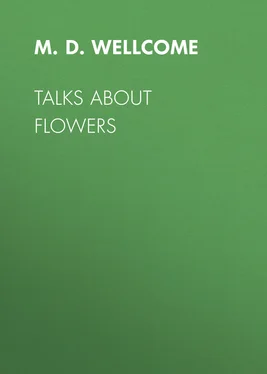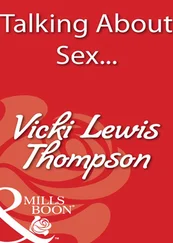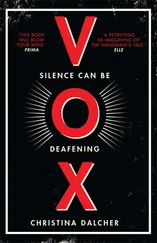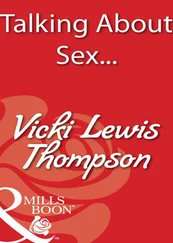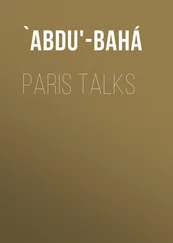M. D. Wellcome - Talks About Flowers
Здесь есть возможность читать онлайн «M. D. Wellcome - Talks About Flowers» — ознакомительный отрывок электронной книги совершенно бесплатно, а после прочтения отрывка купить полную версию. В некоторых случаях можно слушать аудио, скачать через торрент в формате fb2 и присутствует краткое содержание. Жанр: foreign_antique, Биология, Биология, foreign_edu, на английском языке. Описание произведения, (предисловие) а так же отзывы посетителей доступны на портале библиотеки ЛибКат.
- Название:Talks About Flowers
- Автор:
- Жанр:
- Год:неизвестен
- ISBN:нет данных
- Рейтинг книги:4 / 5. Голосов: 1
-
Избранное:Добавить в избранное
- Отзывы:
-
Ваша оценка:
- 80
- 1
- 2
- 3
- 4
- 5
Talks About Flowers: краткое содержание, описание и аннотация
Предлагаем к чтению аннотацию, описание, краткое содержание или предисловие (зависит от того, что написал сам автор книги «Talks About Flowers»). Если вы не нашли необходимую информацию о книге — напишите в комментариях, мы постараемся отыскать её.
Talks About Flowers — читать онлайн ознакомительный отрывок
Ниже представлен текст книги, разбитый по страницам. Система сохранения места последней прочитанной страницы, позволяет с удобством читать онлайн бесплатно книгу «Talks About Flowers», без необходимости каждый раз заново искать на чём Вы остановились. Поставьте закладку, и сможете в любой момент перейти на страницу, на которой закончили чтение.
Интервал:
Закладка:
"Open your eyes, my Pansies sweet,
Open your eyes for me,
Driving away with face so true,
The chilling wind and wintry hue,
That lingers so drearily.
"Open your eyes, my Pansies sweet,
Open your eyes for me.
Where did you get that purple hue?
Did a cloudlet smile as you came through?
Did a little sunbeam bold
Kiss on your lips that tint of gold?
Tell me the mystery.
"In your eyes a story I read—
A story of constancy.
After the storms and winter's wind,
Softly you come with influence kind;
Then as I bend with listening ear,
Your cheerful voice I plainly hear,
Preaching a sermon to me.
"So, whisper to me, my Pansies sweet—
Tell me in rustlings low,
Of that beautiful land where fadeless flowers
Brightly bloom in immortal bowers,
And no blighting wind doth blow.
"Tell of the care that is over all—
That gives you your garments gay;
Whose loving hand clothes the floweret small
That grows in the field, or by the garden wall,
Whose life is only a day.
"Yes, tell of the love, my Pansies sweet,
Of the love that knows no end;
That through earth's winter safely keeps
Watch over his children, and never sleeps;
The love that paints the violet blue,
And quenches your thirst with drops of dew,
The weary heart's faithful friend."
A Talk About Pansies
"Pray you love, remember,
There's Pansies—that's for thought."
I FIND my Pansies are coming up finely. My bed of Pansies last year from "choicest mixed seed" sown in April, began to bloom in June, and afforded me so much pleasure with their varied beauty, that I resolved this year to have a great many of them. I see, now that the snow has melted from the bed, that the plants have wintered well. I had all of the colors shown in the chromo plate of my catalogue, excepting Emperor William , dark blue. I think that somebody else must have got him, for my packet of seed was divided and sub-divided. King of the Blacks was rightly named, a mere dot of yellow in the center, and Pure White was in striking contrast, while Pure Yellow was golden, and Odier was splendid with its dark center banded with yellow and scarlet. Then there was copper-colored and striped, and such rich purples with a dot of yellow. How lovely they were! They were not very large at first, but in August after a rain, I had superb specimens. They were bedded beneath a fruit tree, where they were sheltered from the noonday glare. They thrive best in a moist, partially shaded situation. The blossoms ought to be picked as they fade, for if left to seed the strength is taken from the plants and the blossoms are smaller.
This season I have sown musical Pansies. "Musical Pansies! what are they? What sort of music do they make? Will it be of the Brass Band order, or that of the hand-organ style?"
No, no! Not that coarse, harsh, loud sort at all. If you could hear their low, sweet notes, you would be enraptured. But this cannot be. I call them musical, because named for the great composers, Mozart, Handel, Schiller, Goethe, Beethoven, Haydn, Mendelssohn, and Schumann. They are the "New German Pansies," of which types are given in oil colors, in the catalogue of B. F. Bliss & Sons, and represent the most beautiful strains I have ever seen. They are no fancy sketch, but drawn as true to life in color and size as it was possible to make them, if we will accept the testimony of Dr. Thurber in the American Agriculturist . He says, that "no doubt many who have seen the colored plate published by Messrs. B. F. Bliss & Sons, have supposed that the artist had exercised his imagination both as to size and the strange combinations of colors. So far from this being the case, the flowers are, if anything, rather below the real size, and as to colors, it would be impossible to conceive of any artificial colors more brilliant, or more strongly contrasted, than they are in flowers, produced by this remarkable strain of seeds."
In my childhood I knew nothing of the Pansy. The little Heartsease or Ladies' Delight, as it was then called, was alone cultivated. Mr. Vick tells us how it grew to be the fine flower now so highly prized. About sixty years ago, a very young English lady living on the banks of the Thames, had a little flower garden of her own, and one bed she filled with Pansies, selecting from her father's grounds the finest she could obtain. The gardener, seeing her interest and success, became ambitious to try his hand, and grew plants from the finest specimens. These attracted the attention of professional florists, and speedily the Pansy became a popular flower. Every country gives it a pet name—Heartsease, Fringed Violet, Trinity Flower, Butterfly flower, and Johnny-jump-up, while the French call it Pensée , from which our name of Pansy is probably derived. It means to remember or keep in mind. A floral work published in 1732, illustrates it with a colored plate, which shows it to have been then small like the Ladies' Delight.
MODE OF CULTURE
For summer blooming plants sow seed in the house, in March or April. Cigar boxes are very suitable for seed sowing. Put in a layer of coarse sand for drainage, then one of horse manure for bottom heat. Fill with rich, mellow earth sifted and mixed with one-third silver sand, or finely pulverized leaf mold. Have it moist but not drenched. With a narrow strip of board, make tiny furrows about one and a half inches apart, and in these carefully drop the seed one by one an inch distant. Cover slightly, and press the soil firmly, then lay a piece of old soft flannel folded once or twice, and wrung lightly out of warm water, carefully over the soil, which will keep it damp. Cover with glass, and keep in a warm place. In a few days see if the covering is dry, if so damp it again, and watch for the seedlings. When they appear, remove the flannel, but still keep on the glass, not, however, so close as to exclude all air. Gradually inure them to the sunlight, and as soon as they have made four or five leaves, it is best to transplant every other one, so that they may have room to grow. Great care is needful with tender seedlings to keep them from damping off. If too wet, they will do this, or if kept too shady. Good judgment is essential for success. As the weather becomes warm, expose them at first an hour or two, to the outdoor air, and thus prepare them for early bedding out. Being hardy plants, living out of doors during the winter, with slight protection at the North, they will bear transplanting sooner than many other seedlings. A rich moist soil, and somewhat cool and shaded situation, are best adapted for their growth. For winter flowers, sow seed the last of August, or first of September, in a frame or boxes kept in a shady place.
ASTERS
These must be included among the essential annuals for the garden. They are one of the chief attractions of the border in the autumn, when many flowers have passed their prime. This plant, like the Petunia, has in skillful hands and by hybridization, developed from a very inferior flower to one of great beauty and numerous classes, which embrace a great many varieties. They are represented by Dwarfs and by Giants , ranging intermediately from five or six inches in height to two feet. Dwarf Bouquet presents a mass of flowers with scarcely a leaf, while Tall Chrysanthemum grows to the height of two feet, and the New Victoria , Giant Emperor , Truffant's Perfection and the New Washington bear immense flowers of great beauty. The last named bears the largest flowers of any variety; sometimes they measure more than five inches across. The New Rose is of a strong habit, and the petals of its large blossoms are finely imbricated. Truffant's Fiery Scarlet and Dwarf Fiery Scarlet , are a novelty in color among Asters. Goliath is of a bushy form, and its flowers are very large. Fine colors. Victoria is a dwarf; snow-white, very double. The Crown Asters have white centers surrounded with various bright colors, and are very pretty. The Quilled Asters are quite distinct in character, the petals consisting of tubes or quills with outer blossom petals slightly reflexed. Newest Shakespeare and Diamond and Meteor are novelties of recent introduction, and come in numerous colors. We grew them last year and deem them admirable.
Читать дальшеИнтервал:
Закладка:
Похожие книги на «Talks About Flowers»
Представляем Вашему вниманию похожие книги на «Talks About Flowers» списком для выбора. Мы отобрали схожую по названию и смыслу литературу в надежде предоставить читателям больше вариантов отыскать новые, интересные, ещё непрочитанные произведения.
Обсуждение, отзывы о книге «Talks About Flowers» и просто собственные мнения читателей. Оставьте ваши комментарии, напишите, что Вы думаете о произведении, его смысле или главных героях. Укажите что конкретно понравилось, а что нет, и почему Вы так считаете.
